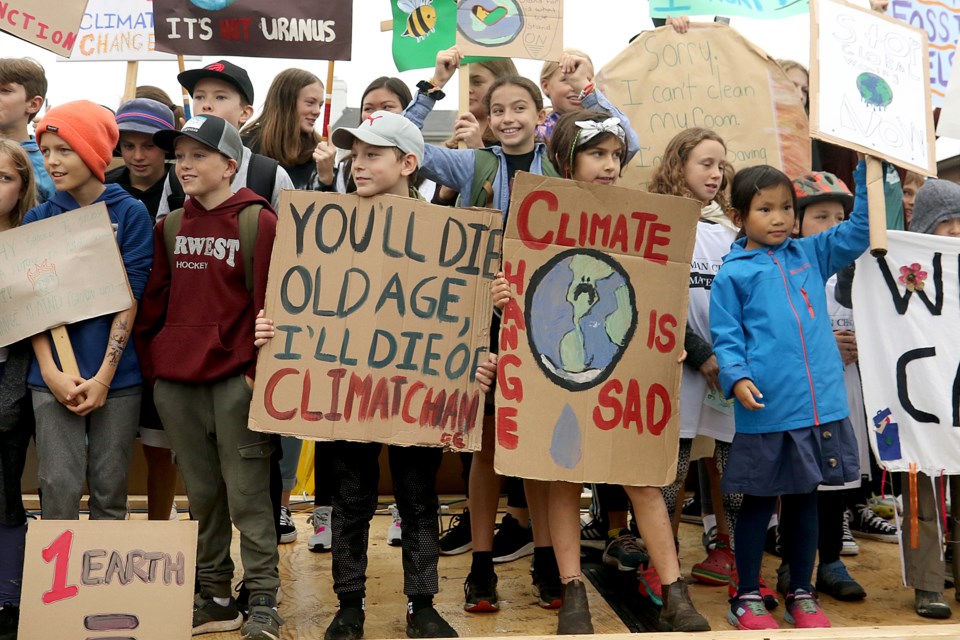THUNDER BAY – Can Thunder Bay become carbon neutral by 2050? It's a daunting but doable task, said leaders behind the city's new net-zero strategy at a virtual launch event Tuesday.
The event was a chance for members of the public to learn more about the strategy, which charts a path to reducing greenhouse gas (GHG) emissions in the city by 90 per cent from 2016 levels.
Roughly 50 members of the public attended the launch over Zoom on Tuesday evening, organizers said. Participants heard presentations from city staff, industry, climate activists, and public health.
The 88-page Climate-Forward City: Thunder Bay Net-Zero Strategy aligns with similar commitments from the federal government and a growing roster of other cities, designed to meet Canada’s commitments under the Paris Agreement to help avert the worst impacts of climate change
City council will vote on whether to approve the strategy on June 7. The plan could have wide-ranging implications for everything from city planning to personal travel if embraced, though its targets are non-binding and rely on cooperation from outside entities.
Its success relies heavily on funding and regulations from federal and provincial governments, and action from industry and residents.
Presenters on Tuesday emphasized the need to break from a “business as planned” scenario that's projected to see local GHG emissions fall only five per cent by 2050.
For city councillor Andrew Foulds, who made introductory remarks as chair of the city’s EarthCare advisory committee, the strategy is a chance to move past climate change concern and firmly into action.
“I’m often worried about the future we’re leaving for our children,” he said. “However, this is not a story about fear, about challenges, but one about hope and opportunity.”
The bold actions set out in the net-zero strategy are projected to create jobs, improve liveability, and reduce inequality, he stressed.
Activists with Fridays for Future, presenting a youth perspective during the launch, endorsed the plan as a worthy road map for climate action.
“It’s essential we appreciate the urgency and significance of the implications around climate change,” said secondary school student and Fridays for Future organizer Nemma Swatton.
“However, fear can actually shut down the brain. We want instead to empower and inspire people into action… This is why we’re so thrilled to learn about how the net-zero strategy plans to take action.”
The group organized large protests in 2019 calling for more action from political leaders, including a demand for the city to declare a climate emergency. City council voted unanimously to make the declaration soon afterwards, which city staff said helped set the stage for the net-zero strategy.
Six “big moves” would get the city three-quarters of the way to its 2050 target, said Summer Stevenson, the city’s acting sustainability coordinator.
Those include retrofitting most local buildings by 2030, moving water and space heating away from fossil fuels by 2040, making all vehicle sales electric by 2040, increasing efficiency by 50 per cent in the industrial sector, boosting local renewable energy production, and diverting organic waste to compost.
David Marshall, manager of sustainability and public affairs for Resolute Forest Products, welcomed the ambitious municipal strategy, saying companies like his were increasingly ready to take the kind of serious climate action it calls for.
Resolute has reduced its own GHG emissions by 83 per cent since 2000, he told participants, though about a third of that came from mill closures.
The plan’s targets may be ambitious, but they're considered necessary to limit climate change impacts like rising sea levels, extreme weather events, and drought, which are expected to spark major food shortages and the forced migration of millions of people, without significant emissions reductions.
“Net zero by 2050 is ambitious, but it’s a bare minimum science-based target if there’s any hope of avoiding catastrophic climate change,” said Kyra Bell-Pasht, a senior consultant with Sustainability Solutions Group (SSG), which the city hired to help gather data and design the strategy.
Bold action over the first five years of the plan will be crucial to reaching the 2050 targets, said Stevenson.
A 2021-2025 implementation plan includes actions like developing a “climate lens” policy for municipal decision-making, launching residential organics collection, exploring financing mechanisms like municipal bonds and local improvement charges, and creating a plan to electrify the public transit bus fleet.
Failure to confront the threat of climate change comes with real consequences for Thunder Bay, if not as serious as those faced elsewhere in the world.
“Thunder Bay is already experiencing the consequences of climate change through the increasing severity of precipitation, snow, ice storms, and wind events, greater temperature fluctuations and extremes, and the growing presence of vector-borne diseases,” the strategy reads.
Climate change will have more health impacts than most realize, said one presenter.
Robert Sanderson, with the Northwestern Health Unit, described his project examining the health impacts of climate change, involving seven northern Ontario health units.
The work indicates climate change is already having measurable health impacts in the region, he told attendees Tuesday. For example, the increasing frequency of extremely hot days appears to be correlated with spikes in ER visits on those days, he said.
In a question-and-answer session, participants asked whether the city would expand transit service, pressed Resolute on its biodiversity and climate record, and questioned the lack of Indigenous perspectives and partnerships in the report.
The lengthy document uses the word “Indigenous” only once, in reference to Indigenous trees, one participant pointed out.
Stevenson didn’t dispute that criticism, saying COVID-19 had challenged community engagement, though it was noted the city had included Fort William First Nation in consultations on the strategy.
The net-zero strategy and a public survey are available for review on the city’s Get Involved website until May 30.
